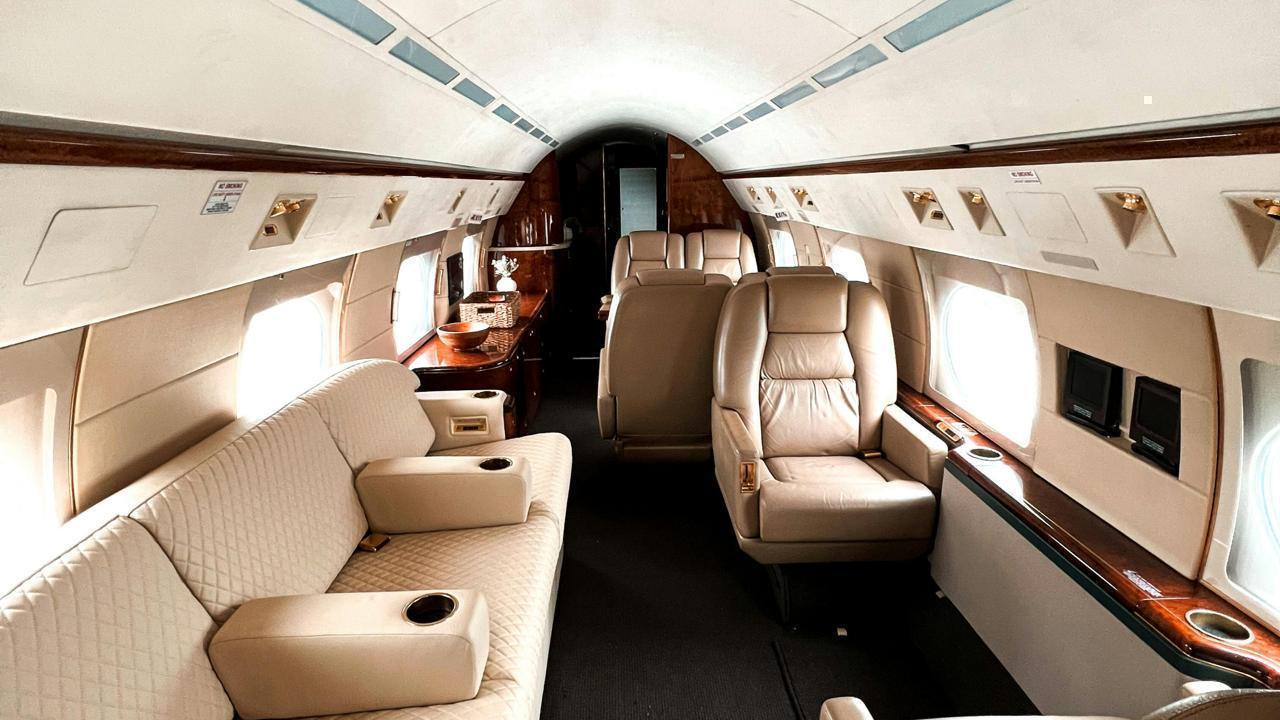
Post by : Amit
Welcome Aboard: A Journey Through a Billion-Dollar Cabin
Picture this: you step into a plane, and everything around you—the seats, the lighting, the walls, even the feel of the air—has been carefully designed and engineered. Not just for comfort, but for performance, safety, and brand identity. What you’re experiencing is the result of an industry set to soar to $3.42 billion by 2032: the aircraft interior decoration materials market.
Let’s walk through the cabin and discover where this money is going, and why it matters.
The Floor Beneath Your Feet: Weightless Wonders
Start with the carpets. You probably don’t give them much thought, but they’re engineered marvels—woven from ultra-lightweight, fire-resistant fibers. These aren’t your everyday textiles. Airlines pay a premium for materials that shed weight, resist wear and tear from thousands of shoes a day, and still look brand new.
Every kilo saved on these carpets? That’s fuel saved—and millions in operational costs avoided.
Your Seat: A Battlefield of Comfort and Compliance
Now, take your seat—literally the most personalized part of any flight. But behind every cushion lies a balancing act between comfort, cost, and compliance.
Interior suppliers are investing in advanced foams, thermoplastics, and breathable composites that deliver the perfect mix of softness, safety, and durability. These materials must pass stringent flammability tests, endure rough treatment, and feel plush enough to keep you happy at 35,000 feet.
More airlines are also moving toward sustainable seat fabrics—from recycled fibers to vegan leather alternatives—without sacrificing luxury, especially in business and first-class cabins.
Walls, Ceilings, and Side Panels: The Silent Protectors
Look up, around, and beside you. The walls and overhead bins aren’t just about storage or aesthetic appeal. These surfaces are constructed using lightweight laminates, decorative films, and advanced composite panels.
Their job? Provide structure, resist impact, and meet safety regulations that most passengers never think about. Interior suppliers now develop panels that are modular, easy to swap, and infused with antimicrobial coatings—a must-have post-pandemic.
Some newer aircraft are even using smart materials that can change color, lighting tones, or adapt acoustically to different cabin zones.
Lighting the Way: Mood, Safety, and Identity
Lighting is no longer just functional—it’s emotional. Airlines are using LED systems and interior light panels that adjust based on time zones, branding colors, and passenger circadian rhythms.
These lighting solutions rely on materials that diffuse light evenly, withstand cabin pressure variations, and integrate seamlessly into ceiling and wall panels.
Cabin ambience has quietly become a brand signature, and suppliers are racing to offer materials that allow for greater design freedom and lighting integration.
Bathrooms, Galleys, and Storage: Unsung Engineering Feats
Head to the lavatory or galley, and you’ll find some of the toughest environments for materials. Constant cleaning, temperature shifts, high humidity, and space limitations mean that every panel, countertop, and cabinet is made from resilient, non-toxic, and fireproof materials.
Cabin designers now use decorative laminates, thermoformed plastics, and scratch-resistant composites that stay clean, look sleek, and comply with every global aviation standard.
What’s Driving This Market Boom?
By 2032, this seemingly invisible industry will be worth $3.42 billion. Here's why:
The Heavyweights: Who’s Making These Cabins?
The race to supply the skies is fierce. Companies like:
...are pouring millions into R&D, developing next-gen materials that balance aesthetics, durability, weight, and compliance.
Many are also teaming up with airlines and airframers early in the aircraft design process to custom-fit materials to future aircraft layouts.
Asia-Pacific Takes the Lead
While North America and Europe still house the big OEMs (like Boeing and Airbus), Asia-Pacific is becoming the fastest-growing market. Rising middle classes, budget airlines, and fleet expansion in countries like China, India, and Indonesia are fueling record-breaking interior material orders.
Flying Green: The Next Frontier
Sustainability is more than a buzzword—it’s becoming policy. Airlines and aircraft manufacturers are moving toward:
Cabin material suppliers must now meet eco-regulations without compromising performance—a massive challenge that’s also opening doors for innovation.
A New Era for Cabin Design
The cabin is no longer just a passive space. It's an active part of the flying experience—from the quiet hum of the overhead panels to the soothing glow of the LED mood lights.
The materials that build that experience are evolving fast. And behind every new seat fabric, overhead bin, or modular galley unit lies a global market racing toward $3.42 billion—fueled by a mix of design ambition, engineering precision, regulatory demands, and economic necessity.
So, the next time you board a plane, take a second to notice what’s around you. Because inside that cabin is not just comfort—it's a quiet revolution in aviation innovation.
Aviation, Aircraft Interior










Bengaluru-Mumbai Superfast Train Approved After 30-Year Wait
Railways approves new superfast train connecting Bengaluru and Mumbai, ending a 30-year demand, easi

Canada Post Workers Strike Halts Nationwide Mail and Parcel Services
Canada Post halts operations as CUPW strike disrupts mail and parcel delivery nationwide amid disput

PM Modi Launches BSNL ‘Swadeshi’ 4G Network, 97,500 Towers Built
India enters global telecom league as PM Modi inaugurates BSNL’s indigenous 4G, connecting 26,700 vi

India’s Iconic MiG‑21 Takes Final Flight After Six Decades of Service
After 60 years India retires its MiG‑21 fighter jet, a legendary yet controversial warplane marking

Hindustan Zinc unveils AI hotspot monitoring at Debari smelter
Hindustan Zinc launches AI-powered Switchyard Hotspot Monitoring at Debari smelter to cut outages bo

Chinese experts worked inside sanctioned Russian drone plant
Chinese drone specialists visited IEMZ Kupol supplying parts and drones via intermediaries, deepenin